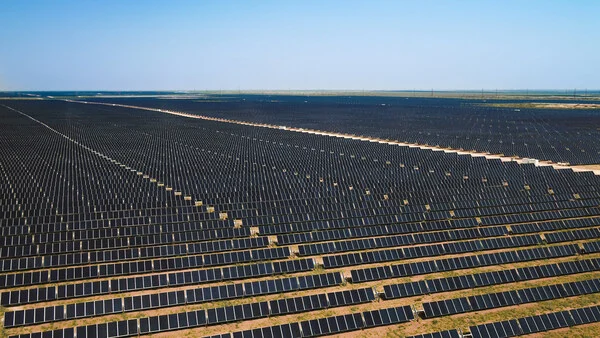Renewable energy and battery storage projects in Texas are projected to contribute more than $20 billion in tax revenue and pay landowners $29.5 billion over their lifetimes, according to a new report released by energy industry groups.
The study, The Economic Impact of Renewable Energy and Energy Storage Investments Across Texas, was authored by Dr. Joshua Rhodes, a research scientist at The University of Texas at Austin and chief technology officer of IdeaSmiths LLC. The report finds that existing and expected renewable projects, including utility-scale wind, solar, and battery storage, will provide nearly $50 billion in combined landowner lease payments and local tax revenues. More than 75% of Texas counties are expected to benefit financially from these projects.
“In many cases, the long-term revenue streams from renewable energy and storage lease agreements are helping rural Texans hold on to land that has been in their families for generations,” said Rhodes. “At the same time, these projects are helping to meet the state’s growing electricity demand and improve grid reliability.”
The report was commissioned by the Advanced Power Alliance (APA), Conservative Texans for Energy Innovation (CTEI), the Solar Energy Industries Association (SEIA), and the Texas Solar + Storage Association (TSSA).
Economic and Grid Benefits
Mark Stover, executive director of TSSA, emphasized the broad benefits of solar and battery storage projects for local communities. “Landowners who choose to host solar and storage projects are securing stable, multigenerational income for their families, while communities gain new tax revenue for schools, infrastructure, and essential services,” he said.
The study also highlights that Texas’ continued expansion of renewable energy is essential for both economic growth and grid reliability. Renewable energy and storage projects offer consistent, affordable power for homes and businesses, reducing electricity costs while supporting rural economies.
Local Impact and Support
The report underscores widespread support for renewable energy among landowners and local officials. Michael Looney, vice president of economic development at the San Angelo Chamber of Commerce, noted that large-scale solar farms have successfully utilized land that would otherwise be difficult for agriculture due to rocky terrain and water scarcity.
Superintendent Justin Risner of Central Independent School District welcomed the financial boost from the Azalea Springs Solar Park, which has helped fund community projects. Similarly, former Cushing ISD superintendent Dr. Michael Davis emphasized that renewable energy projects are providing much-needed revenue for rural school districts.
Texas’ energy landscape continues to evolve, with renewable energy playing an increasingly vital role in the state’s economy and power grid. The full report, including an interactive map detailing project size, tax contributions, and landowner payments by county and legislative district, is available at txrenewables.net.
